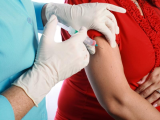Jan 7, 2013
Report: 2009 pandemic spread quickly among Pacific islands
Pandemic H1N1 (pH1N1) flu spread rapidly through Pacific island countries in 2009 despite their geographic isolation, but some remote nations may have escaped it entirely, according to a report today in BMC Infectious Diseases. World Health Organization (WHO) scientists examined data on influenza-like illness (ILI) and lab-confirmed pH1N1 for all 23 Pacific island countries and territories from April 2009 through August 2010. French Polynesia was the first to detect cases, in June 2009, with Tuvalu reporting the latest first detection, in August 2009. Four countries or territories accounted for 64% of confirmed pH1N1 cases: New Caledonia, 501; Guam, 341; Fiji, 235; and French Polynesia, 185. Seven countries or territories reported a total of 21 deaths, and the clinical profile of case-patients matched those reported in other studies. The overall death rate of 1% of lab-confirmed cases was markedly higher than in other global regions, but the authors caution that many factors may have skewed that figure, including underreporting of cases. Niue, Pitcairn, and Tokelau reported no lab-confirmed pH1N1 cases, but small outbreaks of ILI may have occurred on Niue and tiny Pitcairn (population around 50). This means, the authors write, that "Tokelau thus may have been the only country in the world that was able to keep the pandemic out." Tokelau is reachable only by a 2- to 4-day boat ride from Samoa, and the country established strict maritime screening of sick travelers.
Jan 7 BMC Infect Dis report
Prediction: US demand for flu vaccine will stay high for next decade
The US demand for influenza vaccine will remain high in the next 10 years, following a post- pandemic spike, according to a new report from GlobalData, an information provider to global businesses. The report predicts that demand for seasonal flu vaccine will increase from 142 million doses in 2012 to 158 million in 2022, an annual growth rate of 1.2%. The primary driver will be population growth, according to GlobalData, and the corresponding increase in those at highest risk for flu complications. Of the nine major markets included in the report (the United States, Japan, India, China, and the top five European economies), India is expected to experience the greatest surge in vaccine demand, with a predicted annual growth in the next decade of 2.1%.
Jan 4 GlobalData report



















